Mechanical to Radiant Energy Examples
In the world of physics, energy can take many forms and undergo various transformations. One interesting transformation is the conversion of mechanical energy to radiant energy. This occurs when mechanical energy, which is the energy possessed by an object due to its motion or position, is converted into radiant energy, such as light or electromagnetic radiation. Let’s explore some fascinating examples of this energy conversion process.
Fire from Stones

One intriguing example of converting mechanical energy to radiant energy is the creation of fire from stones. In ancient times, our ancestors discovered that striking certain stones together could generate sparks, which could then ignite flammable materials. This process involves the conversion of mechanical energy from the striking motion into heat energy, which is then radiated as light and warmth.
Swordsmanship

Another captivating example of mechanical to radiant energy conversion can be found in the art of swordsmanship. When two swords clash, the mechanical energy of the striking motion is transformed into heat energy due to friction between the blades. This heat energy is then radiated as light, creating a dazzling display of sparks during intense sword fights.
Hair Dryers
Modern-day hair dryers also demonstrate the conversion of mechanical energy to radiant energy. When you turn on a hair dryer, the electric motor inside spins a fan, which creates a flow of air. The mechanical energy from the spinning fan is converted into heat energy through a heating element. This heat energy is then radiated as warm air, drying your hair.
Hammering the Nail

When you hammer a nail into a piece of wood, you are unknowingly witnessing the conversion of mechanical energy to radiant energy. The mechanical energy from your hammering motion is transformed into vibrational energy in the nail, causing the atoms in the nail to vibrate. These vibrations generate heat energy, which is radiated as infrared radiation.
Driving
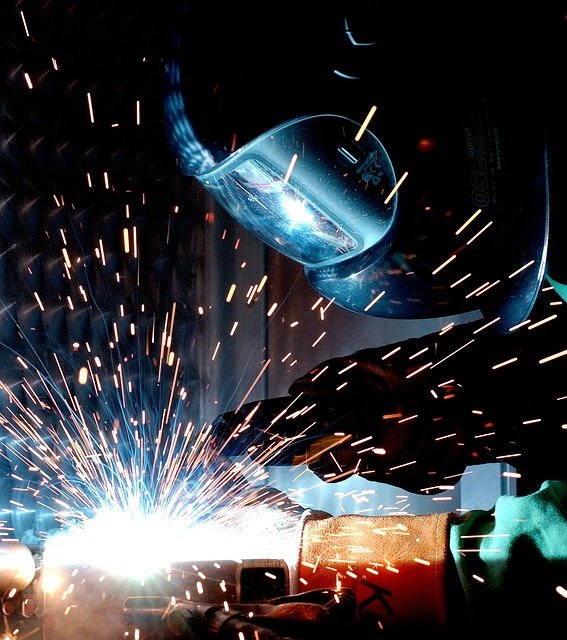
Driving a car involves numerous examples of mechanical to radiant energy conversion. For instance, when you step on the brake pedal, the mechanical energy from your foot is converted into heat energy through friction between the brake pads and the rotors. This heat energy is then radiated into the surrounding environment.
Welding
Welding is a process that utilizes mechanical energy to generate intense heat and light. By using an electric arc or a gas flame, the mechanical energy from the welding equipment is converted into heat energy, melting and fusing metal pieces together. The intense heat generated during welding also radiates as bright light.
Lighting a Bulb Using Motor
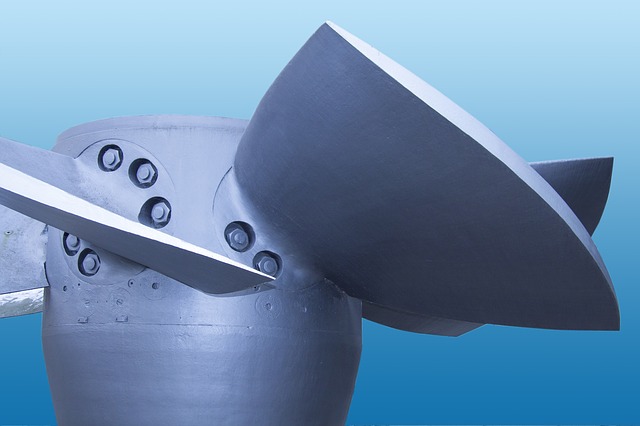
An interesting example of mechanical to radiant energy conversion can be observed in certain flashlight designs. Some flashlights use a small motor to generate mechanical energy, which is then converted into electrical energy through a dynamo mechanism. This electrical energy is further transformed into radiant energy in the form of light, illuminating the bulb.
Generators
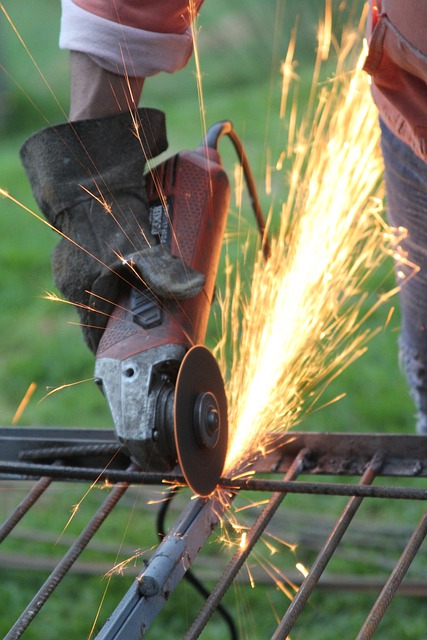
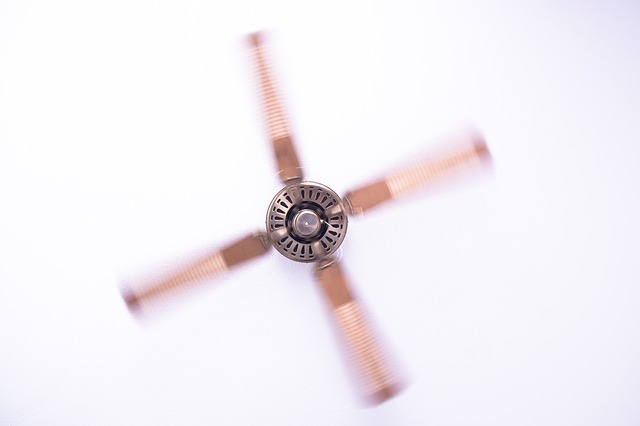
Generators play a crucial role in converting mechanical energy into electrical energy. Whether it’s a hydroelectric generator harnessing the power of flowing water or a wind turbine capturing the energy of the wind, these devices convert the mechanical energy of natural forces into electrical energy. This electrical energy can then be used to power various devices and appliances, including those that emit radiant energy like light bulbs.
Sharpening Machines
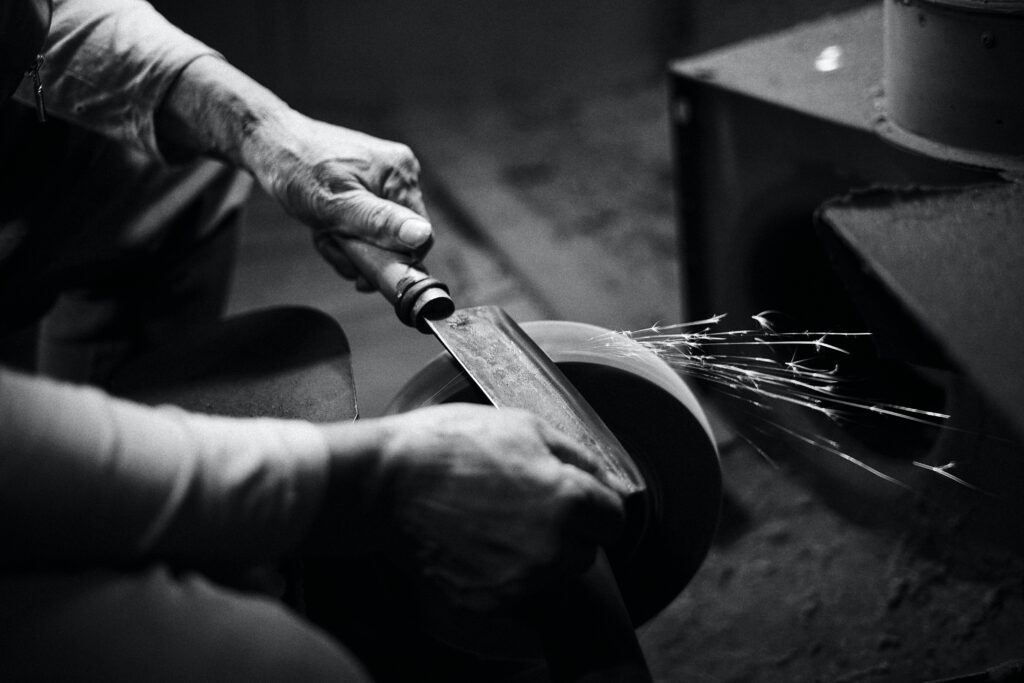
Sharpening machines are essential tools used to restore the sharpness of various cutting instruments. Whether you’re a professional chef, a woodworking enthusiast, or a DIY hobbyist, having a sharp blade is crucial for achieving precise and efficient results. These machines utilize mechanical energy to transform dull edges into razor-sharp ones, making your tasks easier and safer. Let’s explore some examples of how mechanical energy is converted into radiant energy through sharpening machines.
J. Matchsticks
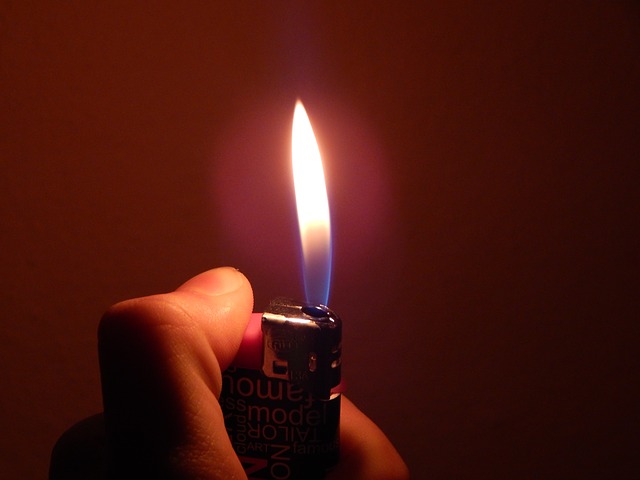
One interesting example of mechanical to radiant energy conversion is the sharpening of matchsticks. Matchsticks are commonly used for lighting candles, stoves, and other objects. However, the match head needs to be sharp and rough to ignite easily. Sharpening machines play a vital role in achieving this desired texture.
When a matchstick is inserted into a sharpening machine, it undergoes a mechanical transformation. The machine’s abrasive surface rubs against the matchstick, gradually removing the outer layer and creating a rough surface. This mechanical energy applied to the matchstick results in the conversion of mechanical energy to heat and light.
As the matchstick rubs against the abrasive surface, friction is generated, causing the matchstick to heat up. This increase in temperature triggers a chemical reaction within the match head, leading to the production of heat and light. The mechanical energy applied by the sharpening machine is thus converted into radiant energy in the form of a flame.
It’s important to note that sharpening machines for matchsticks are designed with safety in mind. They are equipped with safety features to prevent accidental fires and ensure the user’s protection. This example highlights how mechanical energy can be harnessed to generate radiant energy, serving a practical purpose in our everyday lives.
In addition to matchsticks, sharpening machines can also convert mechanical energy to other forms of radiant energy, such as light and electromagnetic radiation, depending on the specific application. For instance, in the case of sharpening blades for cutting tools, the mechanical energy applied by the machine results in the transformation of mechanical energy to light, as the sharp edge reflects and refracts light, making it appear brighter and more visible.
Overall, sharpening machines demonstrate the fascinating process of converting mechanical energy to radiant energy. Whether it’s sharpening matchsticks or blades, these machines play a crucial role in enhancing the functionality and safety of various cutting instruments. So, the next time you light a match or use a sharp blade, remember the mechanical to radiant energy conversion happening behind the scenes.
What is Radiant Energy? (with example)
Radiant energy refers to the energy that is transmitted in the form of electromagnetic waves. It can be observed as light, heat, or any other form of electromagnetic radiation. This type of energy is different from mechanical energy, which is associated with the motion and position of objects. Radiant energy is a fundamental concept in physics and plays a crucial role in various natural phenomena and technological applications.
Definition of Radiant Energy
Radiant energy can be defined as the energy carried by electromagnetic waves. These waves are composed of oscillating electric and magnetic fields that propagate through space. The energy carried by these waves can be transferred from one location to another and can interact with matter, causing various effects.
Electromagnetic waves encompass a wide range of frequencies and wavelengths, forming the electromagnetic spectrum. This spectrum includes radio waves, microwaves, infrared radiation, visible light, ultraviolet radiation, X-rays, and gamma rays. Each type of wave has a specific range of frequencies and wavelengths, and thus carries a different amount of energy.
Example of Radiant Energy
To better understand radiant energy, let’s consider a few examples of how mechanical energy can be converted into radiant energy:
-
Mechanical Energy to Light: When you switch on a light bulb, electrical energy is converted into mechanical energy, which then transforms into radiant energy in the form of visible light. The mechanical energy is used to power the filament inside the bulb, causing it to heat up and emit light.
-
Mechanical Energy to Heat: When you rub your hands together vigorously, the mechanical energy generated by the friction between your hands is converted into heat energy. This heat energy is a form of radiant energy, as it is transferred through the emission of infrared radiation.
-
Mechanical Energy to Energy Transfer: Another example of mechanical energy being converted into radiant energy is the process of energy transfer in a wind turbine. As the wind blows, it causes the blades of the turbine to rotate, converting the mechanical energy of the wind into electrical energy. This electrical energy can then be transmitted through power lines as radiant energy in the form of electromagnetic waves.
These examples illustrate how mechanical energy can be transformed into radiant energy in different ways. Whether it’s the light emitted by a bulb, the heat generated by friction, or the electrical energy produced by a wind turbine, the conversion of mechanical energy to radiant energy is a fundamental process in our everyday lives.
Three Examples of Mechanical Energy to Light Energy
Lighting a Bulb Using a Motor
One fascinating example of converting mechanical energy into light energy is by using a motor to light a bulb. Motors are devices that convert electrical energy into mechanical energy, typically through the interaction of magnetic fields. However, by reversing this process, we can harness the mechanical energy produced by a motor to generate light.
To achieve this, we can connect a small generator to the motor. As the motor spins, it generates mechanical energy, which is then converted into electrical energy by the generator. This electrical energy can then be used to power a light bulb, illuminating our surroundings.
This process demonstrates the conversion of mechanical energy to light energy through the intermediary of electrical energy. It showcases the interconnectedness of different forms of energy and how they can be transformed to serve various purposes.
Generators
Generators play a crucial role in converting mechanical energy into electrical energy, which can subsequently be transformed into light energy. These devices utilize the principle of electromagnetic induction to generate electricity.
When a mechanical force, such as the rotation of a turbine or the movement of a piston, is applied to a generator, it induces a magnetic field. This magnetic field then interacts with a coil of wire, causing electrons to move and creating an electric current.
The electrical energy produced by the generator can be harnessed to power various devices, including light bulbs. By connecting a light bulb to the generator, we can witness the transformation of mechanical energy into light energy. This process is commonly employed in power plants, where mechanical energy from sources like steam or water turbines is converted into electrical energy, which is then distributed to homes and businesses for lighting purposes.
Turning on a Light Switch


Another everyday example of converting mechanical energy into light energy is the simple act of turning on a light switch. When we flick a switch, we are completing an electrical circuit, allowing the flow of electricity to reach the light bulb.
Behind the scenes, this mechanical action of flipping the switch triggers a series of events. The switch is connected to an electrical circuit, which includes wires, a power source, and a light bulb. As the switch is turned on, it allows the electrical current to flow through the circuit, reaching the light bulb.
Once the current reaches the light bulb, it encounters a filament that is heated by the electrical energy. This heat causes the filament to emit light, converting the electrical energy into radiant light energy that illuminates our surroundings.
In this example, the mechanical energy of flipping the switch is transformed into electrical energy, which is then converted into light energy. It showcases how simple actions can initiate complex energy conversions, ultimately providing us with the convenience of artificial lighting.
By exploring these examples, we can gain a deeper understanding of how mechanical energy can be converted into light energy. Whether it’s through the use of motors, generators, or the simple act of turning on a light switch, these processes highlight the interconnected nature of energy and the various transformations it can undergo.
How to Calculate Radiant Energy?
Radiant energy is a form of energy that is emitted in the form of electromagnetic waves, such as light, heat, and other types of radiation. It is an important concept in physics and can be calculated using various formulas and equations. In this section, we will explore the different methods to calculate radiant energy and provide examples to help you understand the process.
Calculating Radiant Energy for Light
When it comes to calculating radiant energy for light, we can use the formula:
Radiant Energy = Power × Time
This formula takes into account the power of the light source and the duration of time it emits light. The unit of radiant energy is typically measured in joules (J). Let’s consider an example to illustrate this calculation.
Example:
Suppose we have a light bulb with a power rating of 60 watts (W) and it is turned on for 5 minutes (300 seconds). To calculate the radiant energy emitted by the light bulb, we can use the formula mentioned earlier:
Radiant Energy = Power × Time
Radiant Energy = 60 W × 300 s
Radiant Energy = 18,000 J
Therefore, the light bulb emits 18,000 joules of radiant energy during the 5-minute period.
Calculating Radiant Energy for Heat
Calculating radiant energy for heat follows a similar principle. The formula for calculating radiant energy for heat is:
Radiant Energy = Stefan-Boltzmann Constant × Surface Area × Temperature Difference^4 × Time
The Stefan-Boltzmann constant is a fundamental constant in physics, denoted by σ (sigma), with a value of approximately 5.67 × 10^-8 W/(m^2·K^4). The surface area refers to the area over which the heat is radiated, and the temperature difference is the difference between the initial and final temperatures. Let’s look at an example to understand this calculation better.
Example:
Suppose we have a metal plate with a surface area of 2 square meters (m^2). The plate is initially at a temperature of 100 degrees Celsius and is allowed to cool down to a final temperature of 50 degrees Celsius over a period of 10 minutes (600 seconds). To calculate the radiant energy emitted by the metal plate, we can use the formula mentioned earlier:
Radiant Energy = Stefan-Boltzmann Constant × Surface Area × Temperature Difference^4 × Time
Radiant Energy = 5.67 × 10^-8 W/(m^2·K^4) × 2 m^2 × (100 – 50)^4 × 600 s
Radiant Energy = 2.56 × 10^6 J
Therefore, the metal plate emits 2.56 × 10^6 joules of radiant energy during the 10-minute period.
Calculating Radiant Energy for Other Forms of Radiation
The calculation of radiant energy for other forms of radiation, such as electromagnetic radiation, follows similar principles. The specific formulas and equations used may vary depending on the type of radiation and the context in which it is being studied. It is important to consult relevant literature or seek guidance from experts in the field when dealing with specific cases.
An Example of Mechanical Energy to Light Energy
When it comes to energy, there are various forms that it can take. One interesting example is the conversion of mechanical energy into light energy. This process involves the transformation of physical movement into electromagnetic radiation, resulting in the production of light. Let’s explore this fascinating phenomenon further.
Mechanical Energy to Light: How Does it Work?
The conversion of mechanical energy to light energy occurs through a series of intricate steps. It involves the transfer of energy from an object in motion to the creation of light waves. To better understand this process, let’s break it down into simpler terms.
-
Mechanical Energy: Mechanical energy refers to the energy possessed by an object due to its motion or position. It can be either kinetic energy (energy of motion) or potential energy (energy stored in an object’s position). In the context of mechanical energy to light energy conversion, we focus on kinetic energy.
-
Energy Transfer: In this example, mechanical energy is transferred to another form of energy, specifically light energy. This transfer occurs when an object in motion interacts with a system that can convert mechanical energy into light energy.
-
Conversion Process: The conversion of mechanical energy to light energy involves the generation of electromagnetic radiation. As the object in motion interacts with the conversion system, the mechanical energy is transformed into electromagnetic waves, which we perceive as light.
Examples of Mechanical Energy to Light Energy Conversion
Now that we understand the basic concept, let’s explore some real-life examples of mechanical energy being converted into light energy:
-
Flashlights: When you turn on a flashlight, you are witnessing the conversion of mechanical energy (from the batteries) into light energy. The mechanical energy stored in the batteries powers the flashlight’s circuitry, which in turn produces light.
-
Incandescent Light Bulbs: Traditional incandescent light bulbs also demonstrate the conversion of mechanical energy to light energy. When an electric current passes through the filament inside the bulb, it heats up and emits light. The electrical energy is converted into mechanical energy (heat) and then further transformed into light energy.
-
LED Lights: Light-emitting diodes (LEDs) are another example of mechanical energy to light energy conversion. LEDs use a semiconductor material that emits light when an electric current passes through it. The electrical energy is converted into mechanical energy (movement of electrons) and finally transformed into light energy.
Advantages of Mechanical Energy to Light Energy Conversion
The conversion of mechanical energy to light energy offers several advantages:
-
Efficiency: Compared to other forms of energy conversion, such as mechanical energy to heat, the conversion to light energy is relatively efficient. This means that a higher percentage of the input energy is transformed into light, resulting in less energy wastage.
-
Versatility: Light energy is a versatile form of energy that can be easily controlled and directed. This makes it suitable for a wide range of applications, from lighting up our homes to illuminating large outdoor areas.
-
Environmental Friendliness: In recent years, there has been a shift towards more environmentally friendly lighting options. Mechanical energy to light energy conversion, particularly in the case of LED lights, offers a greener alternative to traditional incandescent bulbs. LEDs consume less energy and have a longer lifespan, reducing both energy consumption and waste.
What Type of Energy is Radiant Energy?
Radiant energy is a fascinating form of energy that is often overlooked. It is a type of energy that is associated with electromagnetic radiation, such as light, heat, and other forms of energy that travel in waves. Unlike mechanical energy, which is associated with the motion or position of an object, radiant energy is not dependent on physical movement. Instead, it is the energy that is transferred through space by electromagnetic waves.
Radiant energy can be found in various forms, each with its own unique characteristics and applications. Let’s explore some examples of how mechanical energy can be converted into radiant energy.
Mechanical Energy to Light
One common example of the conversion of mechanical energy to radiant energy is the generation of light. This process can be seen in everyday objects such as light bulbs. When an electrical current passes through a filament in a light bulb, it causes the filament to heat up and emit light. In this case, the mechanical energy of the electrical current is transformed into radiant energy in the form of visible light.
Mechanical Energy to Electromagnetic Radiation
Another example of the conversion of mechanical energy to radiant energy is the generation of electromagnetic radiation. This can be observed in devices such as radios and televisions. In these devices, mechanical energy is converted into electromagnetic waves that carry information in the form of radio waves or television signals. The mechanical energy is transformed into radiant energy, allowing us to receive and enjoy various forms of media.
Mechanical Energy to Heat
Mechanical energy can also be converted into radiant energy in the form of heat. This can be seen in processes such as friction, where mechanical energy is transformed into heat energy. For example, when you rub your hands together, the mechanical energy generated by the friction between your hands is converted into heat energy, resulting in a warming sensation. This conversion of mechanical energy to radiant energy is essential for various applications, including heating systems and cooking appliances.
Mechanical Energy to Energy Transfer
In some cases, mechanical energy can be converted into radiant energy as a means of transferring energy from one place to another. An example of this is the use of mechanical energy to power lasers. In a laser, mechanical energy is used to excite atoms or molecules, causing them to emit coherent light. This conversion allows for the transfer of energy in the form of a focused beam of light, which has numerous applications in fields such as medicine, telecommunications, and manufacturing.
Frequently Asked Questions
What is Radiant Energy?
Radiant energy refers to the energy that is transmitted in the form of electromagnetic waves or particles. It is a type of energy that can travel through space and can be detected by our senses or instruments. Radiant energy includes various forms such as light, heat, radio waves, microwaves, and X-rays. It is an essential component of our everyday lives, powering everything from the sun’s rays to the glow of a light bulb.
How does Mechanical Energy Convert into Radiant Energy?
The conversion of mechanical energy into radiant energy occurs through various processes depending on the specific example. Here are a few examples of how mechanical energy can be transformed into radiant energy:
- Mechanical Energy to Light:
-
When you switch on a flashlight, the mechanical energy from the batteries is converted into electrical energy, which then powers the light bulb. The light bulb emits radiant energy in the form of visible light.
-
Mechanical Energy to Electromagnetic Radiation:
-
In a microwave oven, mechanical energy is converted into electromagnetic radiation. The mechanical energy from the rotating turntable and the magnetron is transformed into microwaves, which heat up the food by exciting the water molecules within it.
-
Mechanical Energy to Heat:
-
A common example of mechanical energy being converted into radiant energy in the form of heat is a radiator. When hot water or steam flows through the radiator, the mechanical energy of the moving fluid is converted into radiant energy in the form of heat, warming up the surrounding space.
-
Mechanical Energy to Energy Transfer:
- Another example is the conversion of mechanical energy into radiant energy during the operation of a generator. The mechanical energy from the rotation of the turbine is converted into electrical energy, which can then be transmitted as radiant energy through power lines to homes and businesses.
In each of these examples, the conversion of mechanical energy into radiant energy involves the transformation of one form of energy into another. This process is governed by the principles of energy conservation and the specific properties of the materials and systems involved.
By understanding these examples, we can appreciate the diverse ways in which mechanical energy can be harnessed and transformed into radiant energy, enabling the functioning of various devices and systems in our daily lives.
Frequently Asked Questions
Q: What is mechanical energy?
A: Mechanical energy refers to the energy possessed by an object due to its motion or position. It can be either kinetic energy (energy of motion) or potential energy (energy of position).
Q: What type of energy is radiant energy?
A: Radiant energy is a form of electromagnetic energy that travels in waves. It includes energy from visible light, radio waves, X-rays, and other forms of electromagnetic radiation.
Q: How can mechanical energy be converted to radiant energy?
A: Mechanical energy can be converted to radiant energy through various processes. For example, when a wind turbine spins due to the mechanical energy of wind, it can generate electricity, which is a form of radiant energy.
Q: Can you provide examples of mechanical to radiant energy conversion?
A: Certainly! Some examples of mechanical to radiant energy conversion include a hand-crank flashlight, where mechanical energy is converted to light energy, or a mechanical clock, where mechanical energy is converted to sound energy.
Q: How do you calculate radiant energy?
A: The calculation of radiant energy depends on the specific context. However, in general, radiant energy can be calculated by multiplying the power of the radiant source by the time it is active. The unit of measurement is usually joules (J).
Q: Could you give an example of mechanical energy being converted to light energy?
A: Of course! An example of mechanical energy being converted to light energy is when a person turns on a light bulb by flipping a switch. The mechanical energy from the person’s finger is converted to electrical energy, which then powers the light bulb, producing light energy.
Q: How does mechanical energy convert to electromagnetic radiation?
A: Mechanical energy can be converted to electromagnetic radiation through various means. For instance, when an electric current passes through a wire, it generates a magnetic field, which can then induce the emission of electromagnetic radiation, such as radio waves or light.
Q: Can mechanical energy be converted to heat energy?
A: Yes, mechanical energy can be converted to heat energy. For example, when you rub your hands together, the mechanical energy of the rubbing motion is converted to heat energy, resulting in warmer hands.
Q: What is the difference between mechanical energy conversion and mechanical energy transformation?
A: Mechanical energy conversion refers to the process of changing mechanical energy from one form to another, such as from kinetic energy to potential energy. On the other hand, mechanical energy transformation refers to the overall change in the distribution or type of mechanical energy within a system.
Q: How does mechanical energy transfer occur?
A: Mechanical energy transfer occurs when mechanical energy is transferred from one object to another through physical contact or interaction. For example, when a ball collides with another ball, the mechanical energy of the first ball is transferred to the second ball.
Also Read:
- How to calculate the magnetic energy in an mri for improved imaging
- Example of radiant energy to mechanical energy
- How to calculate energy absorbed or released
- Conservation of mechanical energy examples
- What does not affect potential energy
- How to estimate mechanical energy losses in robotics applications
- Electrostatic energy examples
- How to assess energy consumption in industrial processes
- How to design sound energy based alarm systems for higher effectiveness
- Is potential energy stored energy
Hi, I’m Akshita Mapari. I have done M.Sc. in Physics. I have worked on projects like Numerical modeling of winds and waves during cyclone, Physics of toys and mechanized thrill machines in amusement park based on Classical Mechanics. I have pursued a course on Arduino and have accomplished some mini projects on Arduino UNO. I always like to explore new zones in the field of science. I personally believe that learning is more enthusiastic when learnt with creativity. Apart from this, I like to read, travel, strumming on guitar, identifying rocks and strata, photography and playing chess.